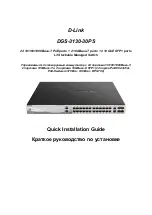
•
Between two MST regions, the packet is forwarded along the CST.
Implementation of MSTP on devices
MSTP is compatible with STP and RSTP. Devices that are running MSTP and that are used for spanning
tree calculation can identify STP and RSTP protocol packets.
In addition to basic MSTP functions, the following functions are provided for ease of management:
•
Root bridge hold
•
Root bridge backup
•
Root guard
•
BPDU guard
•
Loop guard
•
TC-BPDU guard
•
BPDU drop
Protocols and standards
MSTP is documented in the following protocols and standards:
•
IEEE 802.1d:
Media Access Control (MAC) Bridges
•
IEEE 802.1w:
Part 3: Media Access Control (MAC) Bridges—Amendment 2: Rapid Reconfiguration
•
IEEE 802.1s:
Virtual Bridged Local Area Networks—Amendment 3: Multiple Spanning Trees
MSTP configuration task list
Before configuring MSTP, you must plan the role of each device in each MSTI, root bridge or leaf node,
and then configure the devices as planned. In each MSTI, only one device acts as the root bridge, and
all others act as leaf nodes.
Complete these tasks to configure MSTP:
Task
Remarks
Required
Configuring the root bridge or a secondary root bridge
Optional
Configuring the work mode of an MSTP device
Optional
Configuring the priority of a device
Optional
Configuring the maximum hops of an MST region
Optional
Configuring the network diameter of a switched network
Optional
Optional
Configuring the timeout factor
Optional
Configuring the maximum port rate
Optional
Configuring ports as edge ports
Optional
Configuring the root
bridge
Configuring the link type of ports
Optional
59
















































